ecosystem-guides.com
....exploring the planet's ecosystems
AUSTRALIAN
Spinifex Grasslands & Desert
These habitats are probably the closest reality to most people's imagination of an Australian desert...
 Dark rain clouds on the horizon of the Australian desert
Dark rain clouds on the horizon of the Australian desertOther arid habitats that may be adjacent include: the arid Eucalypt woodlands found in gorges and along dry rivers, the Mulga shrublands and the chenopod shrublands found across temperate southern Australia.
Over long periods of time, weathering and oxidisation has resulted in distinctive bright orange-red soils. Under and around the small trees and shrubs, much of the arid land of Australia is dominated by bunches of prickly grass called 'Spinifex'.
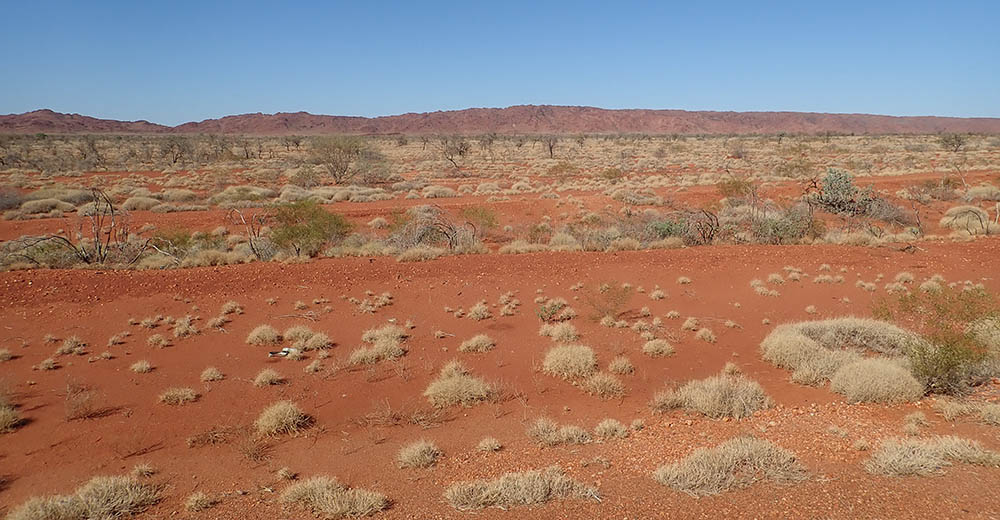
Despite the poor quality substrate and unpredictable rainfall, there is a surprising range of beautiful flowers, and they can add a splash of colour to the arid habitats across Australia.
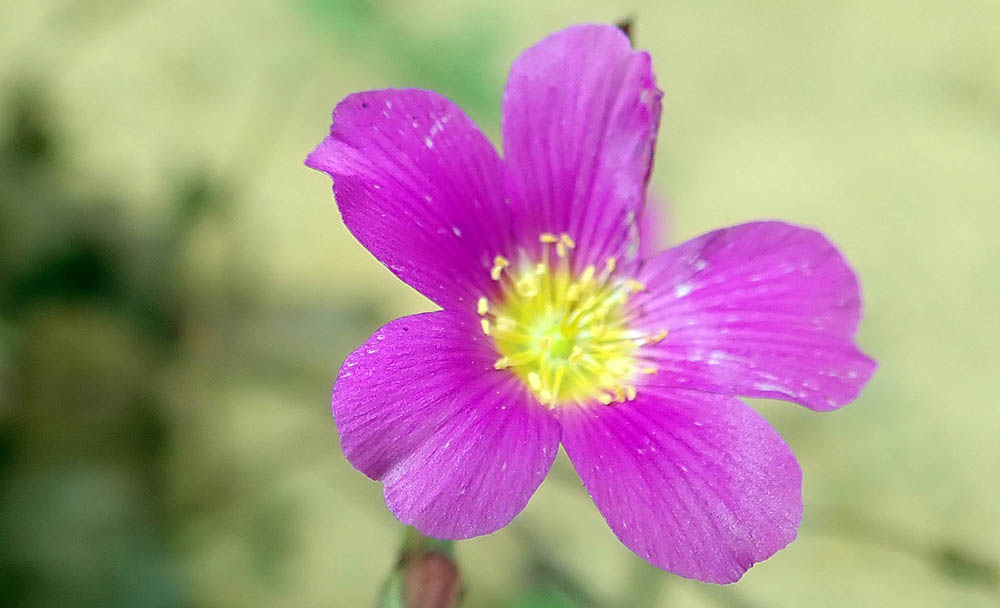 A Parakeelya flower (genus Rumicastrum, formerly Calandrinia). Confusing enough?
A Parakeelya flower (genus Rumicastrum, formerly Calandrinia). Confusing enough?The most important and obvious group of plants in the arid areas of Australia are the Spinifex grasses, Triodia. They are a different genus from the 'true' Spinifex of the coastal areas. There are over 65 species, many teased out only recently. They are all endemic to Australia. Aboriginal uses of these widespread plants included burning for long range black smoke signals, and the resin was used as glue for spear-making. These clumps are used as protection by many animals including insects, lizards, birds and small mammals.
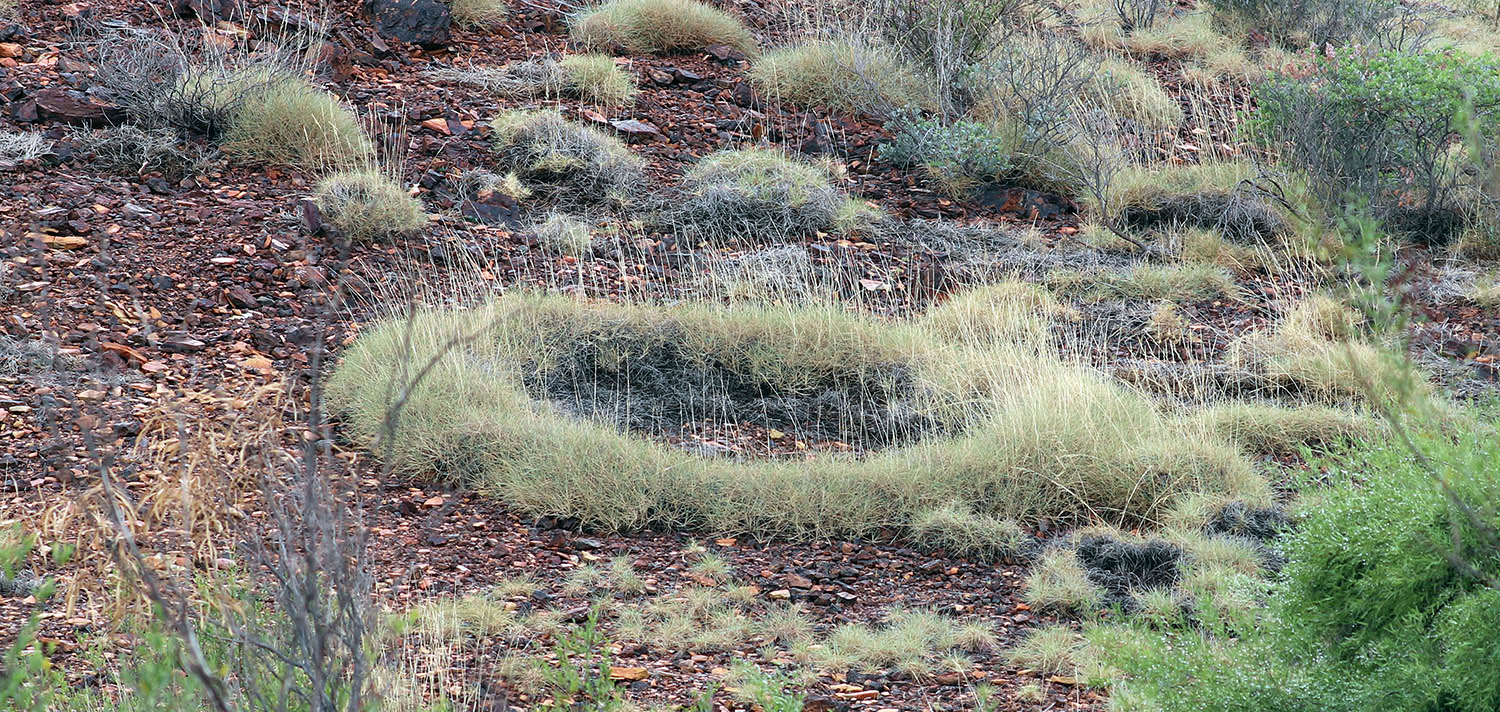 (Millstream, WA)
(Millstream, WA)There are about 85 species in the genus Swainsona. All of these, except for one species, are endemic to Australia. Most are prostrate, crawling along the ground with opposite leaves. They include some of the brighter and erect pea flowers in the Australian desert. Some species produce a compound called swainsonine, a phytotoxin that causes disease in cattle when ingested. This is also found in a few other plants in the Americas that are called 'locoweeds'. The resulting sickness is referred to as swainsonine toxicosis, or 'peastruck' in Australia.
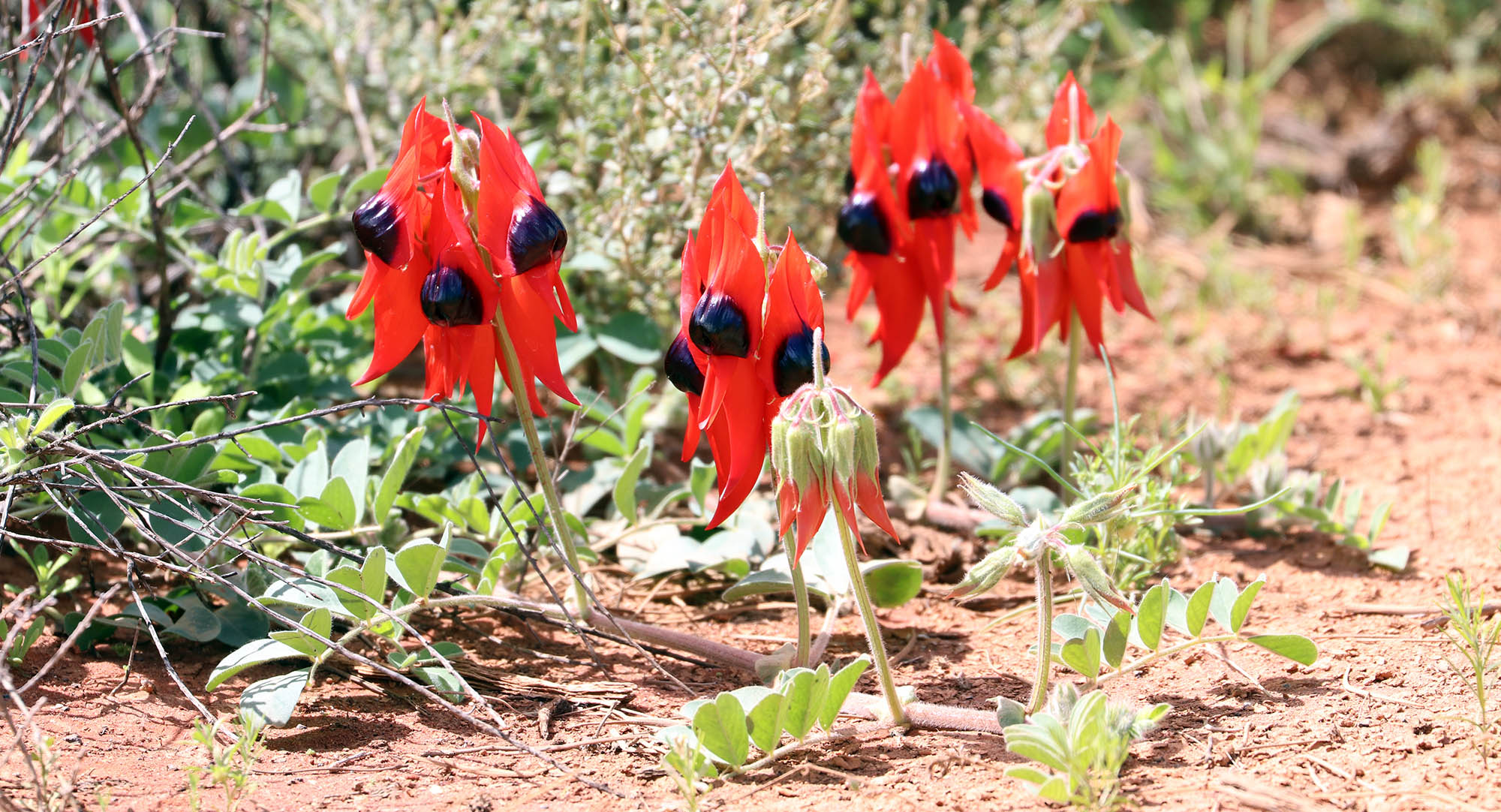 Sturt's Desert Pea, (Coober Pedy, SA)
Sturt's Desert Pea, (Coober Pedy, SA)The family Amaranthaceae includes beetroot. In this habitat the family also includes the genus Ptilotus, which contains some 120 species. They are herbs or small shrubs. They usually have pink flowers that hang down like a tail, and thus are often nicknamed pussycat, lambs or fox 'tails'. One of the Aboriginal names that has stuck is 'Mulla Mullaa'. They are a common and diverse group within arid habitats across Australia, and are endemic to that continent. They are most diverse in the Pilbara region.
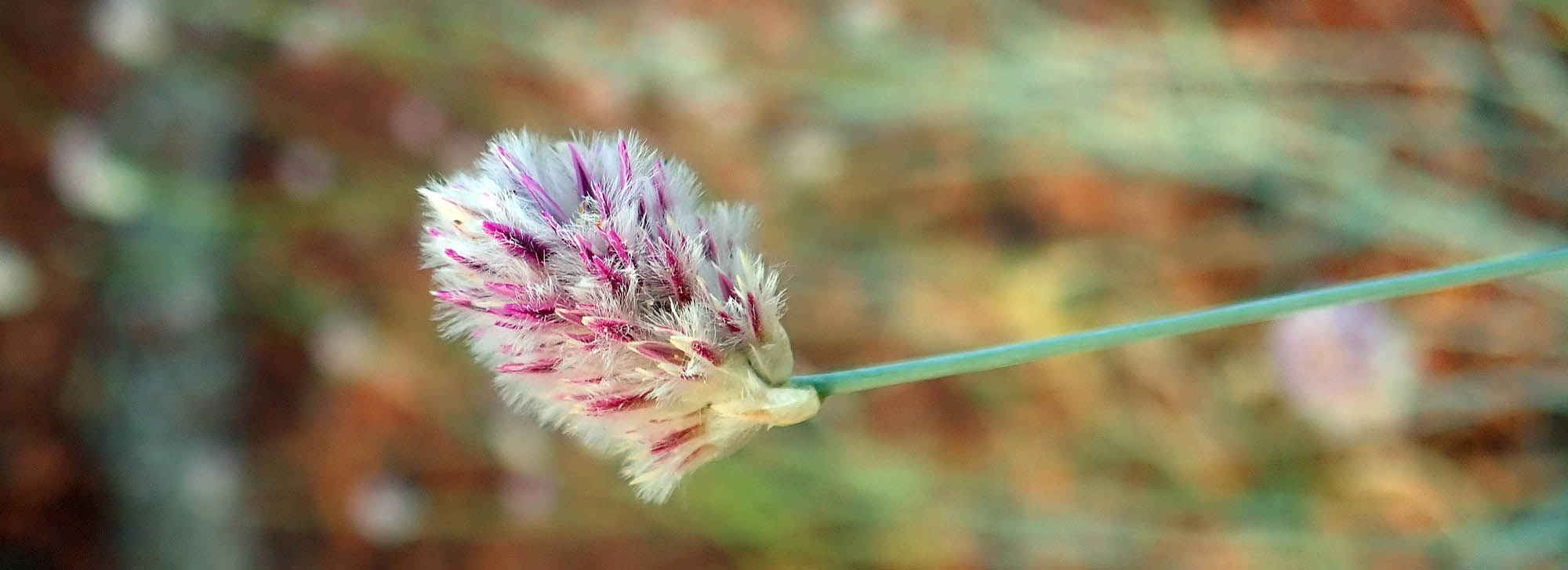 (Telstra Hill, Mt. Isa, Queensland)
(Telstra Hill, Mt. Isa, Queensland)Ptilotus schwartzii, 'Horse Mulla Mulla' (above) is an example of one of the many species in this habitat. It is a herb with thin wiry green stems. There is a long ball of 'fluffy' pink-purple (sometimes white) flowers produced in winter. They are found in open arid areas across Australia, especially Western Australia.
The family Goodeniaceae contains about 200 species. While a few species extend into south-east Asia, most are found and are endemic to the arid habitats of the mainland states of Australia.
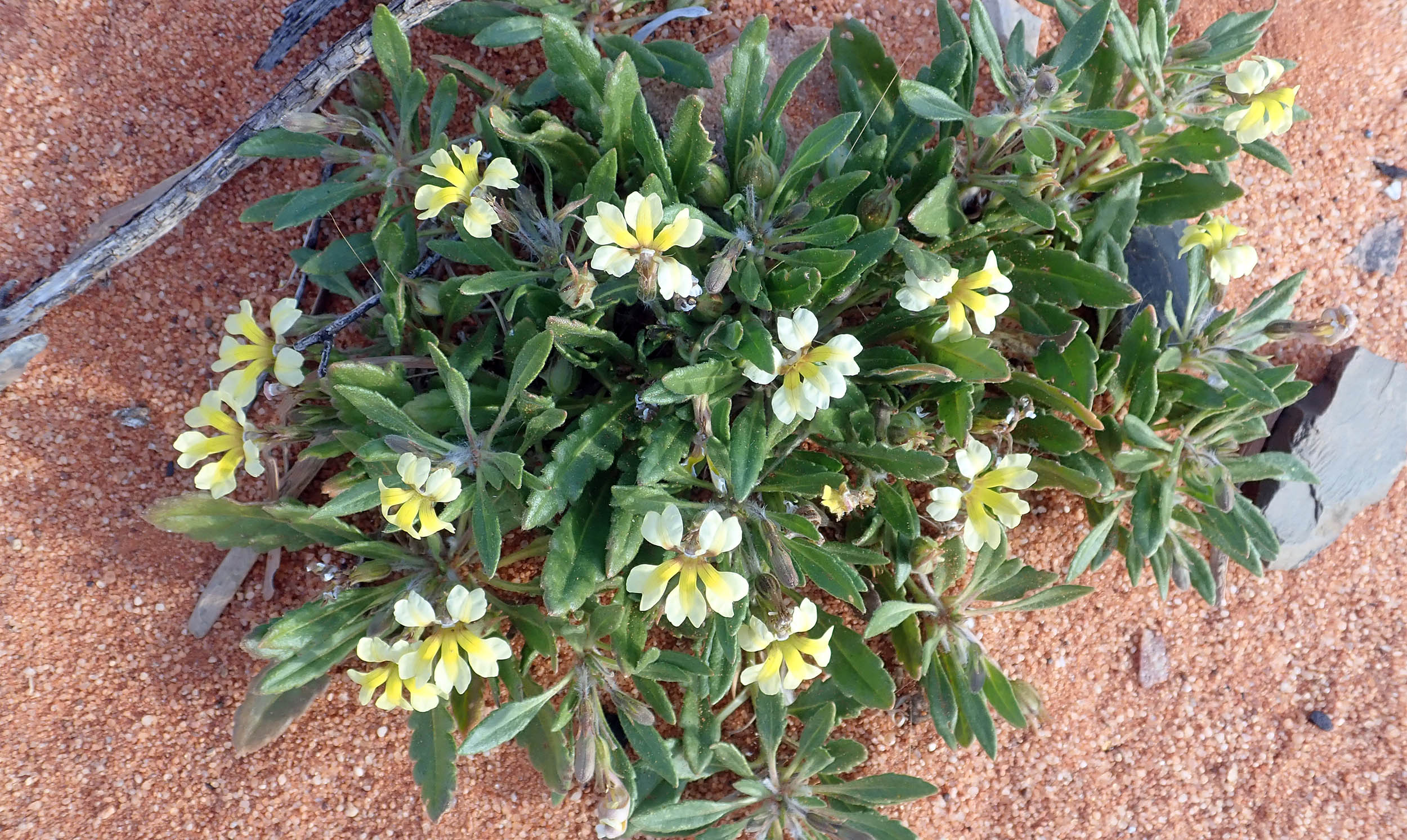 Goodenia cylcoptera, (South Australia)
Goodenia cylcoptera, (South Australia)One of the groups of animals that are traditionally least adapted and species diverse in the deserts are the amphibians. But despite this, there are frogs to be found here. There are 9 or so species in this genus Neobatrachus, the. 'Desert Frogs' . They are round, squat frogs, with pupils that constrict vertically. During the dry times they are buried underground; once it starts to rain, they emerge to breed. All the species are endemic to Australia, are usually distributed across arid areas of the continent, and with most species found in the south-west of Australia.
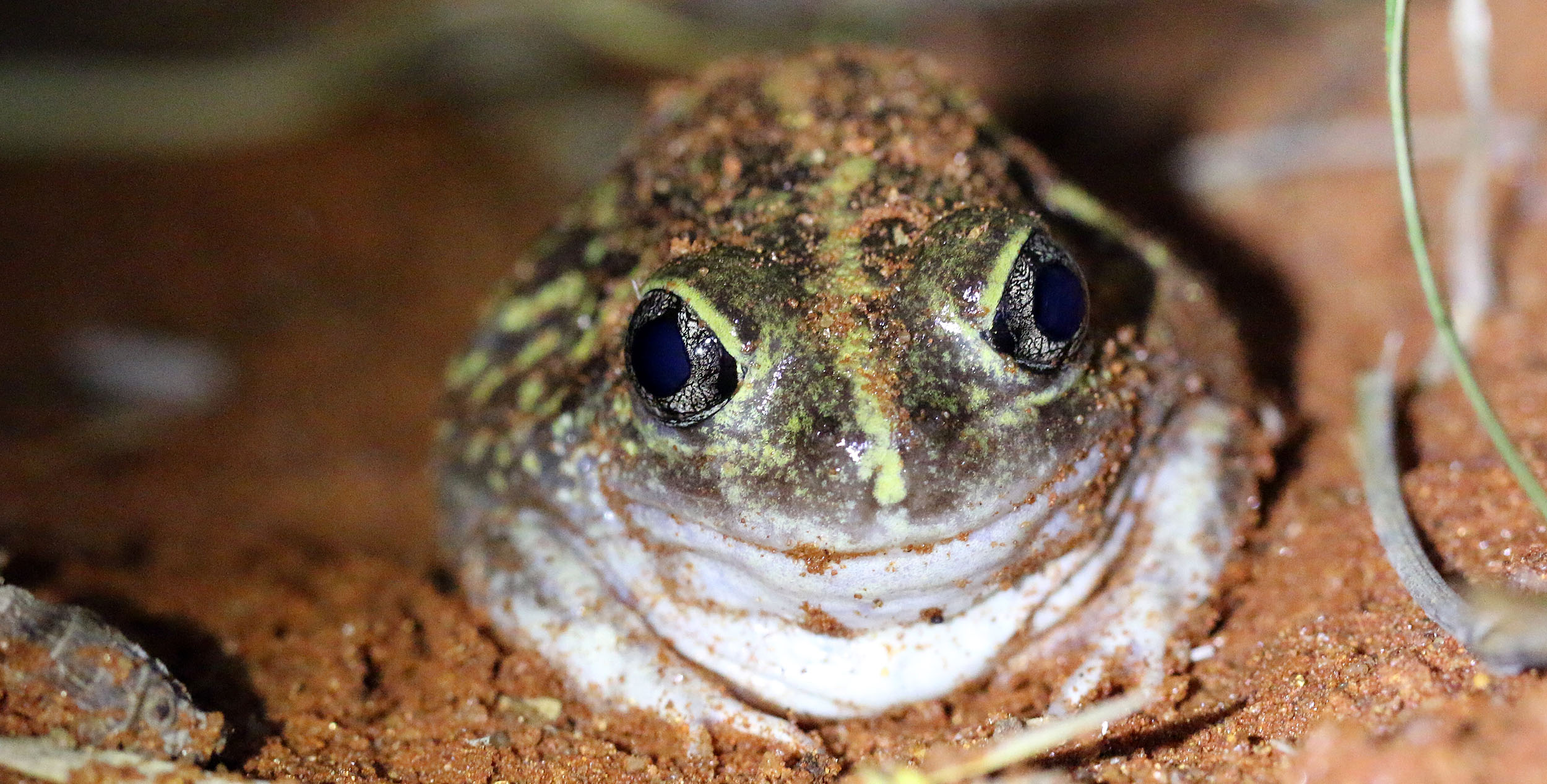 (inland of Shark Bay, Western Australia)
(inland of Shark Bay, Western Australia)There is one group that is very diverse in these arid habitats of Australia - lizards! In fact, there are claims that some of the dry habitats in Australia, such as the Spinifex grasslands, have the highest diversity of lizards in the world. However, this does not mean you will see lots of them. In the winter they may be slow and scarce. In the summer, they are energetic and fast. As you are walking along through the spinifex clumps, you may see a flash of movement that is so fast, it feels like you imagined it! These are tiny lizards that are bolting from the shelter of one grass to another.
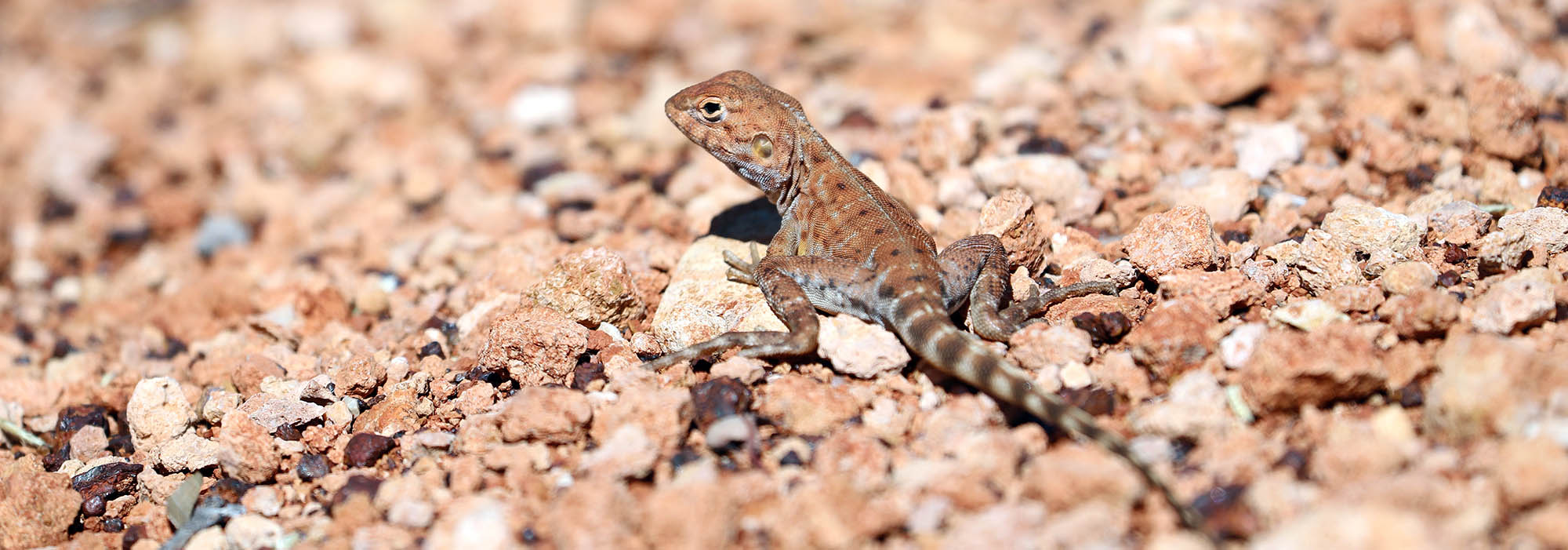 'Western Ring-tail Dragon', (Millstream National Park, Western Australia)
'Western Ring-tail Dragon', (Millstream National Park, Western Australia)Despite the aridity, the drier areas of Australia are home to some of our most colourful birds! While the diversity of birds in the Australian arid areas is not high compared to the other habitats on the continent, or the equivalent arid areas of Africa, there are still many interesting species to be found.
 (Crimson Chat, north of Cober Pedy)
(Crimson Chat, north of Cober Pedy)The next largest bird of the arid Australian habitats after the Emu is the 'Australian Bustard', Ardeotis australis. They are about a metre in height. Despite the size, they are often not noticed by drivers as they race past on outback roads. These days, they are usually found in arid tropical grasslands, although they were previously more widespread across Australia.
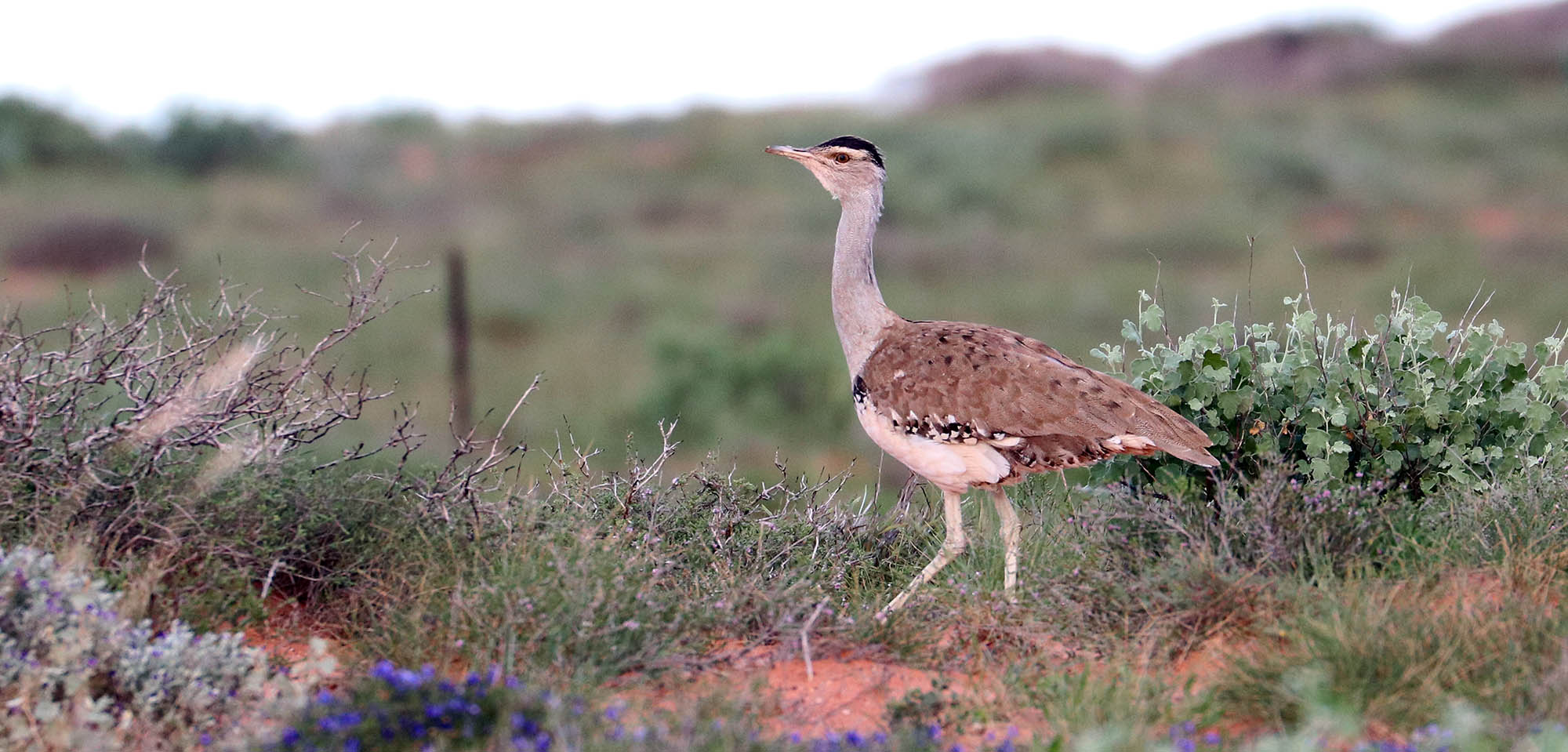 (Inland from Exmouth)
(Inland from Exmouth)The 'Spinifex Pigeon' is found, as the names suggests, around spinifex communities.
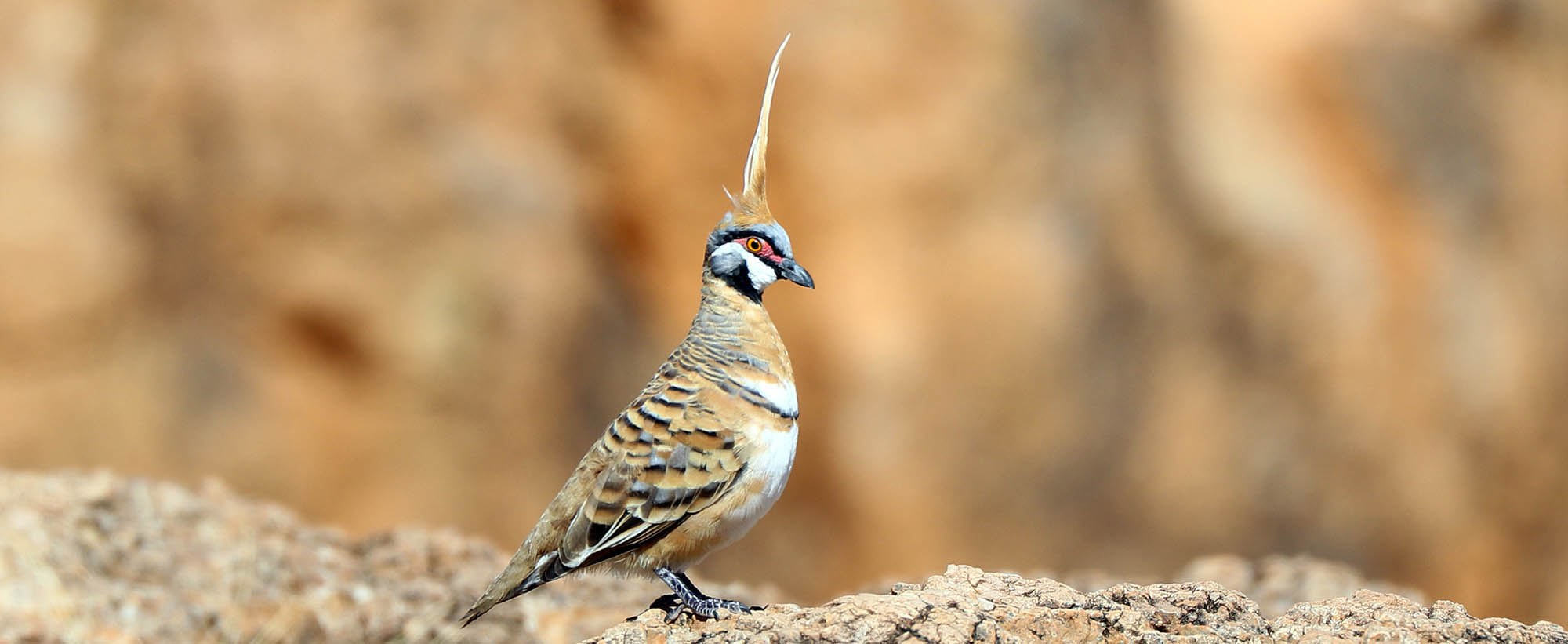 Eastern White-bellied Spinifex Pigeon (Bladensberg, Queensland)
Eastern White-bellied Spinifex Pigeon (Bladensberg, Queensland)Emblema pictum, 'Painted Finch'. Striking black and red. They feed mainly on the seeds of 'Spinifex Grass'. Found in rocky country, mostly arid areas, but also in southern tropical savanna.
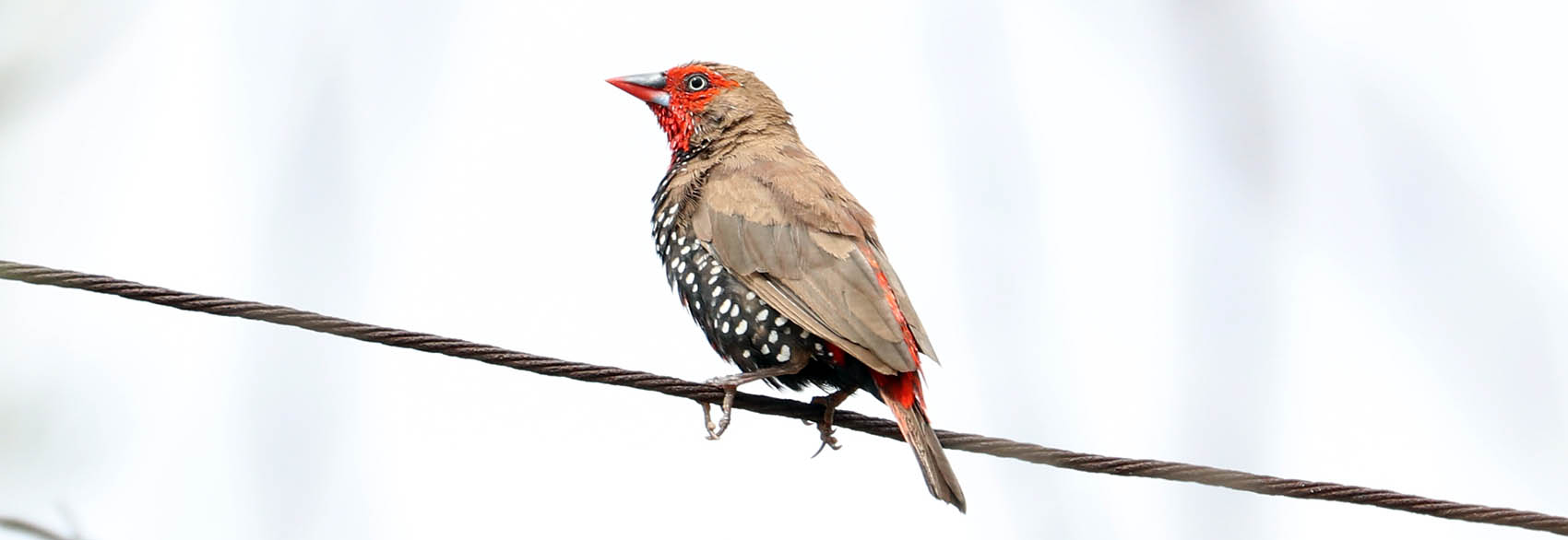 (Telstra Tower hill, Mt Isa)
(Telstra Tower hill, Mt Isa)The biggest and most obvious group of mammals in Australia's arid habitats are the Kangaroos and Wallabies of the superfamily Macropodoidea. Some of the larger species, like Red and Western Grey Kangaroo and Euro (below) are still common.
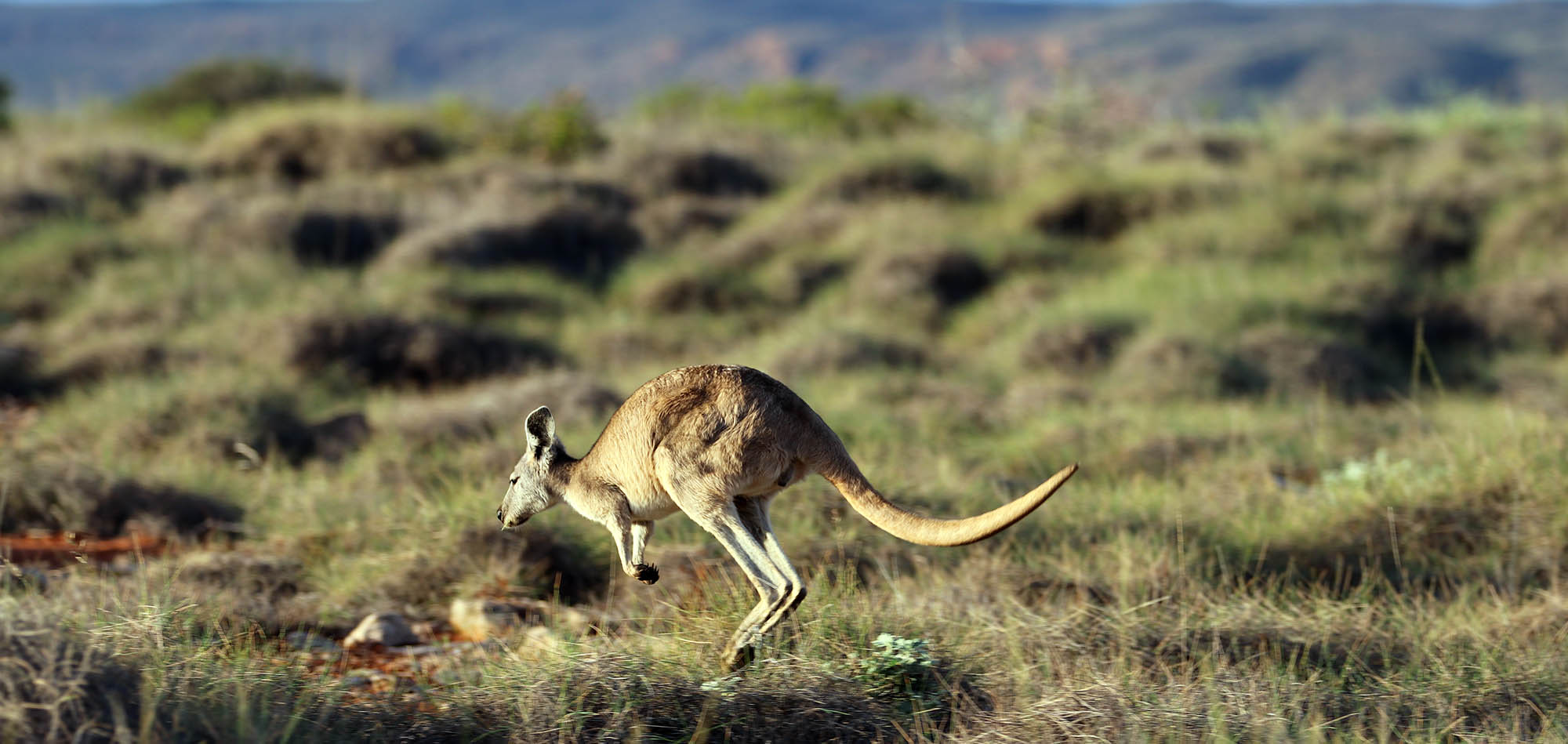 'Euro' or '(Western) Wallaroo'.
'Euro' or '(Western) Wallaroo'.However, many of the smaller species are rarer. In the last few hundred years of European settlement, many species of the Australian arid regions have been reduced in number or even become extinct.
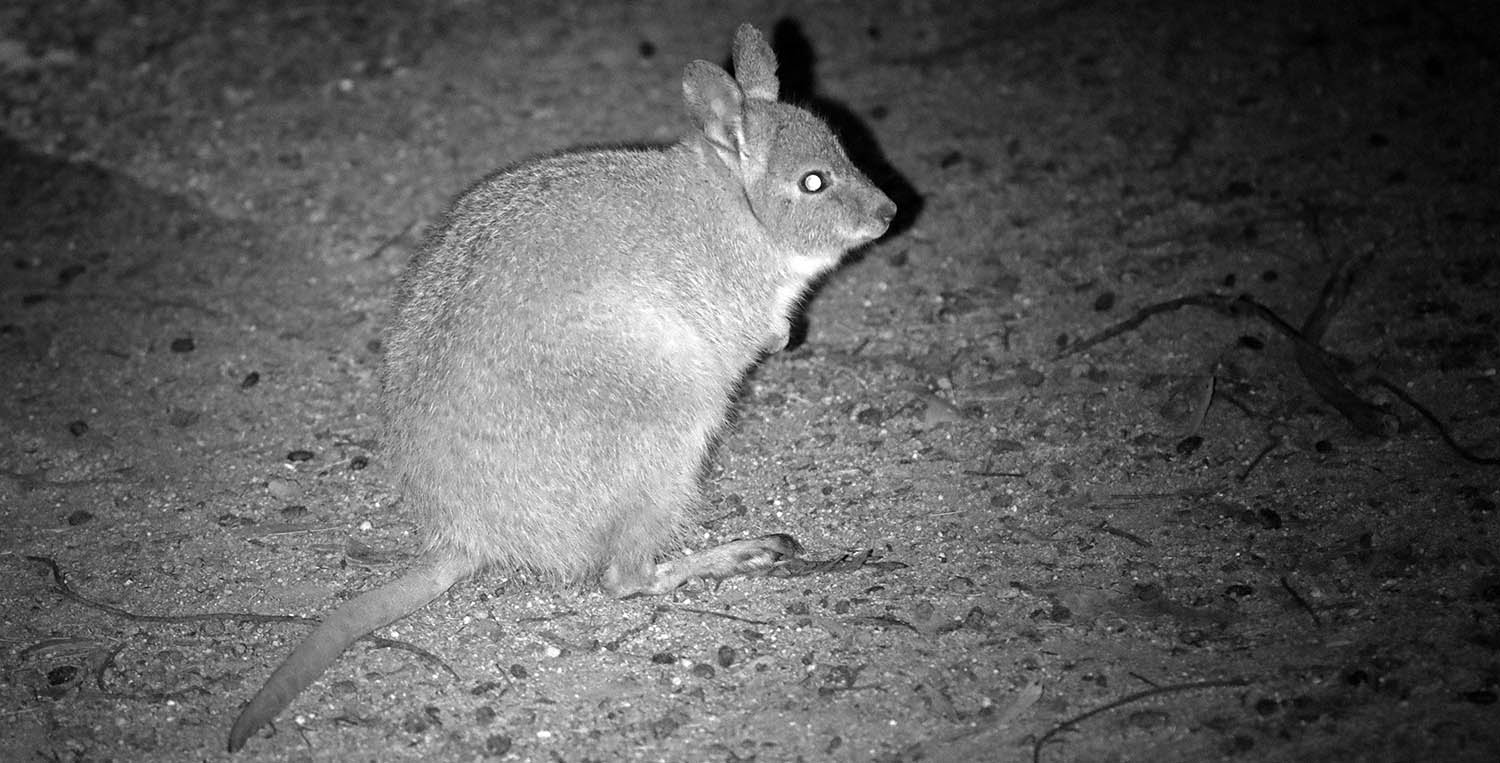 'Rufous Hare-Wallaby', (Barna Mia, Dryandra)
'Rufous Hare-Wallaby', (Barna Mia, Dryandra)The Rock Wallabies are a fascinating group and most diverse in the arid habitats. However they tend to live within the rocky habitats such as gorges, so I cover them more in the section on Australian arid Eucalypt woodlands.
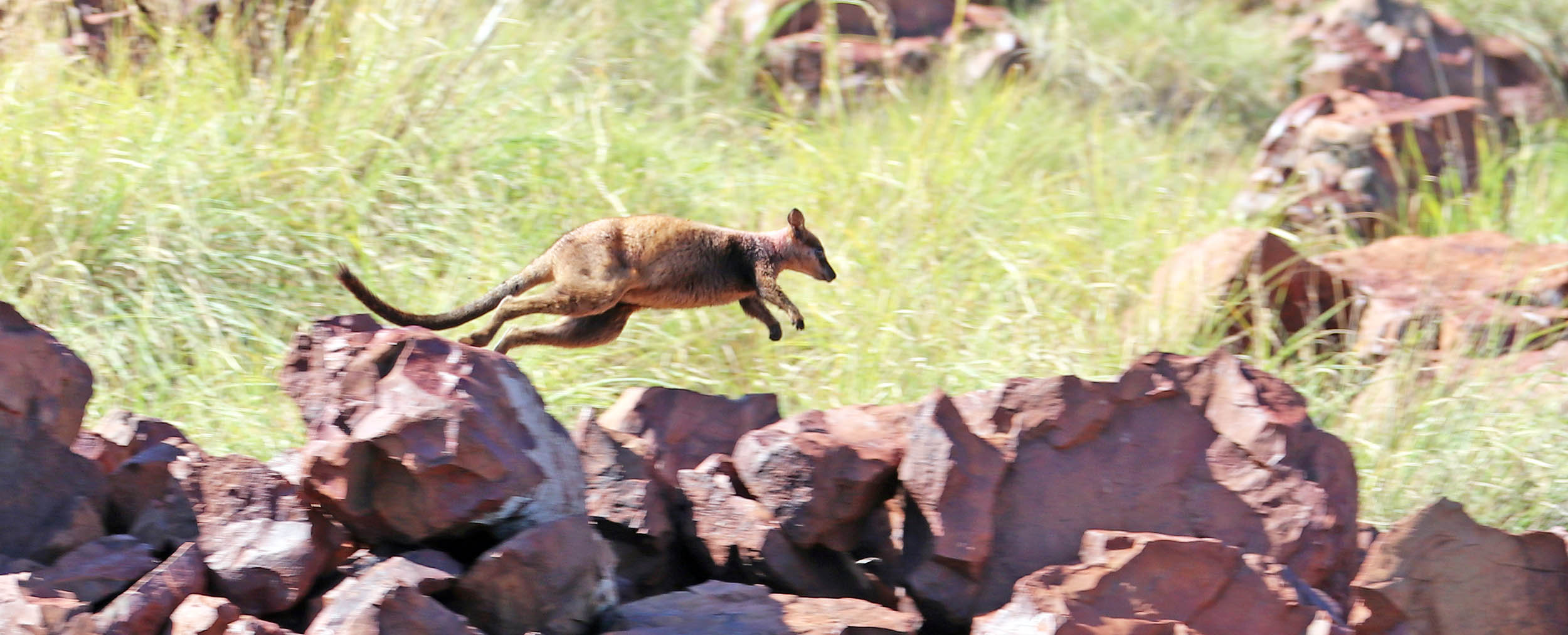 Rothschild's Rock Wallaby, (Dampier Archipelago)
Rothschild's Rock Wallaby, (Dampier Archipelago)One of the reasons for the relatively high rate of native mammal extinctions in Australian arid habitats is no doubt the obvious amount of introduced mammals. The list is long and includes camels, goats, dogs, cats, rabbits, and cows.
 Camel (Winton)
Camel (Winton)


